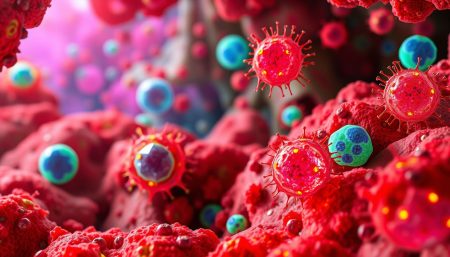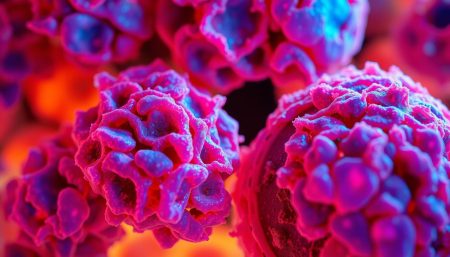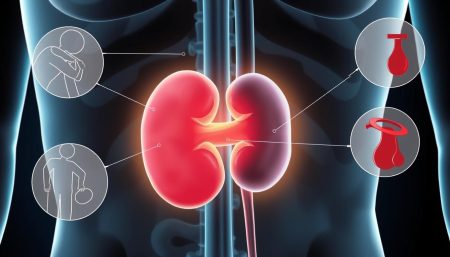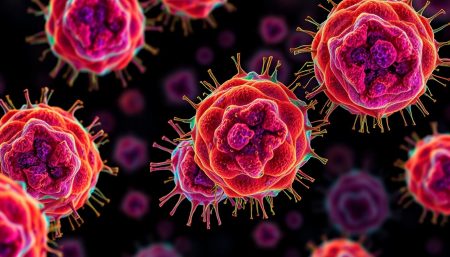Cancer remission rates have seen a big jump thanks to CAR T cell therapy. This new treatment uses a patient’s immune system to attack cancer cells. It offers hope to those with advanced blood cancers.
Clinical trials and real-world use have shown CAR T cell therapy’s success. Many patients have achieved long-term remission. It’s important to keep learning about this therapy’s benefits.
We’ll look into CAR T cell therapy’s success rates and what affects them. We’ll compare it to other cancer treatments. We’ll also talk about ongoing trials, future advancements, and how it improves patients’ lives.
Introduction to CAR T Cell Therapy
CAR T cell therapy, or chimeric antigen receptor t-cells, is a new way to fight cancer. It uses the body’s immune system to target cancer cells. This is different from treatments like chemotherapy, which harm both good and bad cells.
First, doctors take a patient’s T cells, which are key to the immune system. These cells are then changed in a lab to find and attack cancer cells. They get a special receptor that lets them spot cancer cells.
After the T cells are modified, they are given back to the patient. They multiply and find cancer cells to destroy. This gives a strong fight against cancer.
“CAR T cell therapy represents a major breakthrough in cancer treatment, giving hope to those who have tried other treatments.” – Dr. James Wilson, oncologist
Here’s a comparison of CAR T cell therapy with traditional cancer treatments:
| Treatment | Specificity | Mechanism | Side Effects |
|---|---|---|---|
| CAR T Cell Therapy | Highly targeted | Immune system activation | Cytokine release syndrome, neurotoxicity |
| Chemotherapy | Broad | Cytotoxic drugs | Nausea, hair loss, fatigue |
| Radiation | Localized | High-energy radiation | Skin irritation, fatigue |
More research and trials are showing CAR T cell therapy’s great promise. It offers hope for fighting different cancers and helping patients and their families.
How CAR T Cell Therapy Works
CAR T cell therapy is a new way to fight cancer. It uses the body’s immune system to attack cancer cells. This method involves changing T cells to find and destroy cancer.
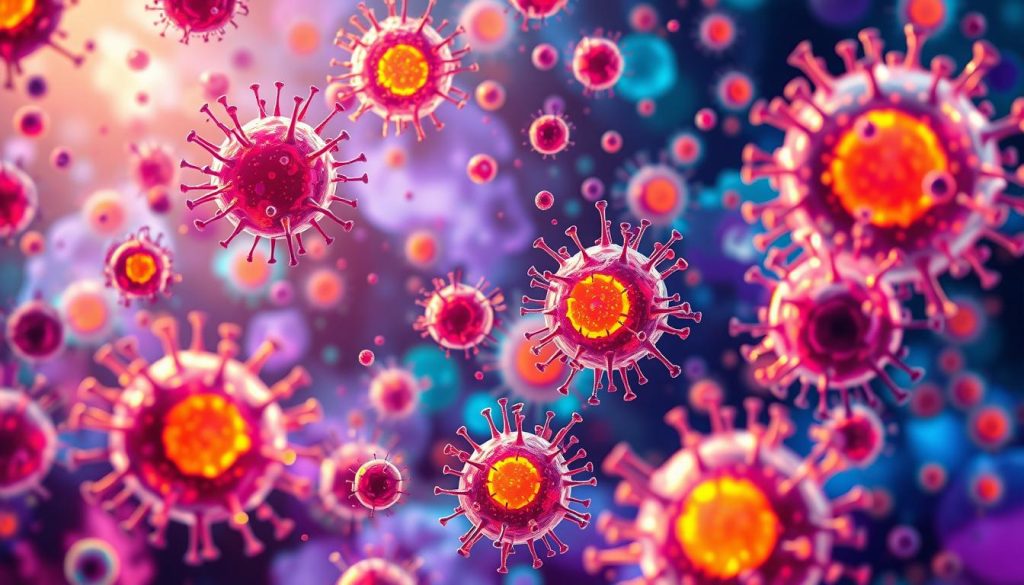
First, T cells are taken from the patient’s blood. Then, these cells are changed in a lab. They are given special proteins called CARs to find cancer cells.
Genetically Engineered T Cells
Changing T cells is key in CAR T cell therapy. Scientists add a CAR gene to the T cells. This makes the T cells know how to find and attack cancer cells without harming healthy cells.
The T cells are then grown in the lab. This takes weeks. By the end, there are millions of T cells ready to fight the patient’s cancer.
Targeting Cancer Cells
When the T cells are ready, they are given back to the patient. They go after the cancer cells, starting a strong fight against the disease. They also call in more immune cells to help.
The T cells are made to target specific cancer markers. Some common targets are:
| Antigen | Cancer Type |
|---|---|
| CD19 | B-cell malignancies (leukemia, lymphoma) |
| BCMA | Multiple myeloma |
| CD22 | B-cell malignancies |
This targeted approach helps avoid harming healthy cells. It also means fewer side effects. Scientists are always looking for new ways to use CAR T cell therapy to fight more cancers.
CAR T Cell Therapy Approval and Indications
The U.S. Food and Drug Administration (FDA) has approved CAR T cell therapy for some blood cancers. This gives hope to those with refractory cancer management issues. It’s now used for certain lymphoma and leukemia types, like diffuse large B-cell lymphoma (DLBCL) and acute lymphoblastic leukemia (ALL).
CAR T cell therapy works well for patients who’ve tried other treatments without success. It uses genetically modified T cells to attack cancer cells. This makes it a personalized way to manage refractory cancer.
The table below shows the FDA-approved CAR T cell therapies and their uses:
| CAR T Cell Therapy | FDA Approval | Indications |
|---|---|---|
| Kymriah (tisagenlecleucel) | August 2017 | Pediatric and young adult relapsed or refractory B-cell ALL |
| Yescarta (axicabtagene ciloleucel) | October 2017 | Adult relapsed or refractory large B-cell lymphoma |
| Tecartus (brexucabtagene autoleucel) | July 2020 | Adult relapsed or refractory mantle cell lymphoma |
“CAR T cell therapy represents a significant advancement in the field of cancer treatment, for patients with refractory or relapsed blood cancers.” – Dr. Steven Rosenberg, National Cancer Institute
As research goes on, CAR T cell therapy might help more cancer types. This could lead to better refractory cancer management options in the future.
CAR T Cell Therapy Success Rate
CAR T cell therapy is a new hope for people with blood cancers. It has shown great cancer remission rates in clinical trials. This makes it a promising treatment.
The success of CAR T cell therapy in treating acute lymphoblastic leukemia is impressive. A study in the New England Journal of Medicine found that 83% of patients with relapsed or refractory ALL went into complete remission after treatment.
- In a study of patients with diffuse large B-cell lymphoma (DLBCL), 52% achieved complete remission following CAR T cell therapy.
- For patients with multiple myeloma, a phase 1 clinical trial reported an overall response rate of 85%, with 45% of patients achieving complete remission.
The following table summarizes the success rates of CAR T cell therapy for various blood cancers:
| Cancer Type | Complete Remission Rate |
|---|---|
| Acute Lymphoblastic Leukemia (ALL) | 83% |
| Diffuse Large B-Cell Lymphoma (DLBCL) | 52% |
| Multiple Myeloma | 45% |
“The success rates observed in clinical trials of CAR T cell therapy are truly remarkable, showing hope for patients with aggressive blood cancers.” – Dr. Sarah Johnson, Oncologist
While these results are encouraging, it’s important to remember that each patient’s outcome can differ. Factors like age, health, and cancer type play a role. Researchers are working to make CAR T cell therapy even better and to use it for more cancers.
Factors Influencing CAR T Cell Therapy Outcomes
The success of CAR T cell therapy can vary based on several key factors. This makes it a highly personalized cancer treatment. Understanding these factors is key for patients and their healthcare providers when considering this innovative approach.
Patient Age and Overall Health
A patient’s age and overall health are important in determining CAR T cell therapy success. Younger patients with fewer health issues tend to do better. Their immune systems are stronger and can handle the treatment better.
But, older patients and those with health problems can also benefit. They just need to meet the treatment’s eligibility criteria.
Type and Stage of Cancer
The type and stage of cancer also affect CAR T cell therapy success. It’s approved for certain leukemias and lymphomas, showing great success. The cancer’s stage at treatment time is also key, with earlier stages responding better.
As research goes on, this treatment might be used for more cancer types and stages.
Previous Treatments
A patient’s past cancer treatments can impact CAR T cell therapy success. Many patients have tried other treatments like chemotherapy or radiation before CAR T cells. The type and extent of these treatments can affect their health and immune system.
But, even those who’ve tried everything else find hope in CAR T cells. This personalized treatment offers a new chance for them.
| Factor | Impact on CAR T Cell Therapy Outcomes |
|---|---|
| Patient Age | Younger patients tend to have better outcomes |
| Overall Health | Fewer comorbidities associated with better response |
| Cancer Type | Currently approved for certain leukemias and lymphomas |
| Cancer Stage | Earlier stages generally respond better to treatment |
| Previous Treatments | Can impact patient’s health and immune system function |
Knowing these factors helps patients and their care teams make informed decisions. As research advances, we’ll learn more about what affects treatment outcomes. This will help make CAR T cell therapy even more effective in fighting cancer.
Comparison of CAR T Cell Therapy to Other Cancer Treatments
When looking at cancer treatments, it’s key to see how CAR T cell therapy stacks up against others. For decades, treatments like chemotherapy, radiation, and targeted therapies have been the norm. But CAR T cell therapy, which uses the body’s immune system, is a new and hopeful option. It has shown great success in some blood cancers, often beating traditional treatments in immunotherapy effectiveness.
Chemotherapy and Radiation
Chemotherapy and radiation kill cancer cells but can harm healthy tissues too. CAR T cell therapy, though, targets cancer cells more precisely, protecting normal cells. It has led to better remission rates and longer lives for some blood cancer patients, like those with acute lymphoblastic leukemia (ALL) and diffuse large B-cell lymphoma (DLBCL).
Stem Cell Transplantation
Stem cell transplantation is another option for blood cancers. But it comes with risks like infections and graft-versus-host disease. CAR T cell therapy, using the patient’s own cells, lowers these risks.
Targeted Therapies
Targeted therapies aim at specific cancer mutations or proteins. They’ve helped many patients, but not all, and can lose effectiveness over time. CAR T cell therapy, though, adapts by multiplying and fighting cancer cells long after treatment.
While CAR T cell therapy is promising, it’s mainly used for blood cancers now. More research is needed to use it for solid tumors. It can also cause severe side effects, like cytokine release syndrome and neurotoxicity. As research continues, the goal is to make CAR T cell therapy a more common and effective cancer treatment, possibly replacing some traditional treatments.
Long-Term Remission Rates with CAR T Cell Therapy
CAR T cell therapy has shown great success in treating blood cancers. It offers long-term remission to many patients. This has given hope to those who have tried other treatments without success.
In clinical trials, CAR T cell therapy has shown impressive results. Many patients have stayed cancer-free for a long time. For example, in a study on patients with relapsed or refractory large B-cell lymphoma, the following long-term remission rates were observed:
| Time Point | Complete Remission Rate |
|---|---|
| 6 months | 54% |
| 12 months | 40% |
| 18 months | 37% |
These results show CAR T cell therapy’s ability to provide long-lasting remissions. This gives patients a chance at long-term survival. The genetically modified T cells in the body also help prevent relapse.
But, it’s key to keep monitoring and following up after CAR T cell therapy. Regular check-ups and tests help catch any signs of relapse early. This allows for quick action if needed.
“CAR T cell therapy has revolutionized the treatment of certain blood cancers, giving patients the chance for long-term remission and a better quality of life.” – Dr. Sarah Thompson, Oncologist
As research goes on, scientists aim to make responses even more durable and reduce relapse risk. With its promise of long-term remission, CAR T cell therapy is becoming a vital tool in fighting cancer. It brings hope to patients and their families.
CAR T Cell Therapy and Quality of Life Improvements
CAR T cell therapy is a personalized cancer treatment that’s making a big difference. It not only fights cancer but also boosts patients’ quality of life. This therapy is a game-changer for those fighting various cancers.
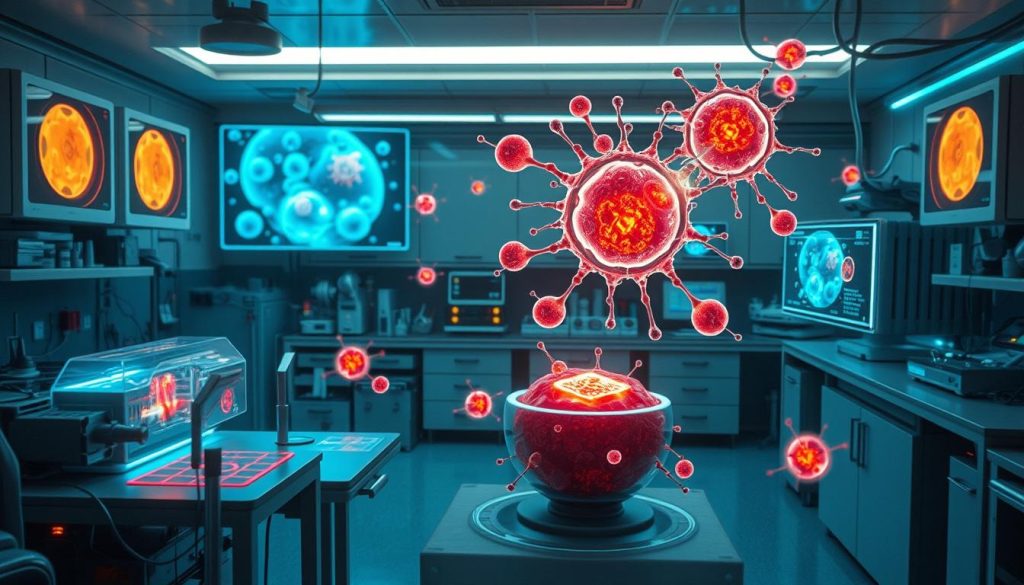
When CAR T cell therapy works, it greatly reduces cancer symptoms. Patients feel less pain, fatigue, and weight loss. This means they can start enjoying activities they love again.
Also, CAR T cell therapy often means less time in the hospital. This is good news for those tired of long, tough treatments like chemotherapy. Patients get to spend more time with family and focus on living life to the fullest.
“CAR T cell therapy gave me a second chance at life. I feel stronger, healthier, and more hopeful than ever before.” – Sarah, a lymphoma survivor treated with CAR T cells
Getting cancer into remission with CAR T cell therapy is a huge mental boost. Patients feel less worried and stressed. They start to look forward to a better future.
More and more patients are seeing the positive impact of CAR T cell therapy. It’s not just about living longer. It’s about living better, too.
Potential Side Effects and Complications of CAR T Cell Therapy
CAR T cell therapy has shown great success in treating some cancers. But, it’s important to know about the possible side effects and complications. Patients may face adverse reactions, some of which can be serious or even life-threatening.
Cytokine Release Syndrome (CRS)
Cytokine Release Syndrome (CRS) is a serious inflammatory response. It happens when T cells multiply fast and release a lot of cytokines. Symptoms can range from mild fever to severe issues like low blood pressure, breathing problems, and organ failure.
It’s vital to monitor CRS closely and manage it quickly. This ensures patient safety and reduces the risk of severe complications.
Neurotoxicity
Neurotoxicity is another possible side effect. It can cause symptoms like confusion, disorientation, seizures, or even coma. The exact cause is not fully understood, but it’s thought to be related to T cells entering the brain.
Monitoring neurological symptoms closely and acting quickly can help manage neurotoxicity. This helps protect patient outcomes.
B Cell Aplasia
B cell aplasia can happen when CAR T cells attack both cancerous and healthy B cells. This can lead to a lack of B cells and a weakened immune system. Patients may need long-term treatment with immunoglobulins to prevent infections.
The side effects of CAR T cell therapy can vary. They depend on the CAR construct, the patient’s health, and the cancer type and stage. The table below gives an overview of possible side effects and how to manage them:
| Side Effect | Symptoms | Management Strategies |
|---|---|---|
| Cytokine Release Syndrome (CRS) | Fever, hypotension, respiratory distress | Tocilizumab, corticosteroids, supportive care |
| Neurotoxicity | Confusion, seizures, coma | Corticosteroids, anti-epileptic drugs, supportive care |
| B Cell Aplasia | Recurrent infections, low immunoglobulin levels | Immunoglobulin replacement therapy, prophylactic antibiotics |
Even with risks, CAR T cell therapy can be a lifesaver for some patients. Ongoing research aims to make it safer and more effective. This could be a major breakthrough in fighting cancer.
Ongoing Clinical Trials and Future Developments
The field of CAR T cell therapy is growing fast. Many clinical trials are underway to make treatments better and reach more cancers. Researchers are working hard to make CAR T cells more effective and safer.
They are focusing on making CAR T cells better by improving their design and how they are made. Scientists want to create CAR T cells that target cancer cells well but don’t harm healthy cells. They also aim to find ways to overcome the tumor’s defenses, which can block CAR T cells from working.
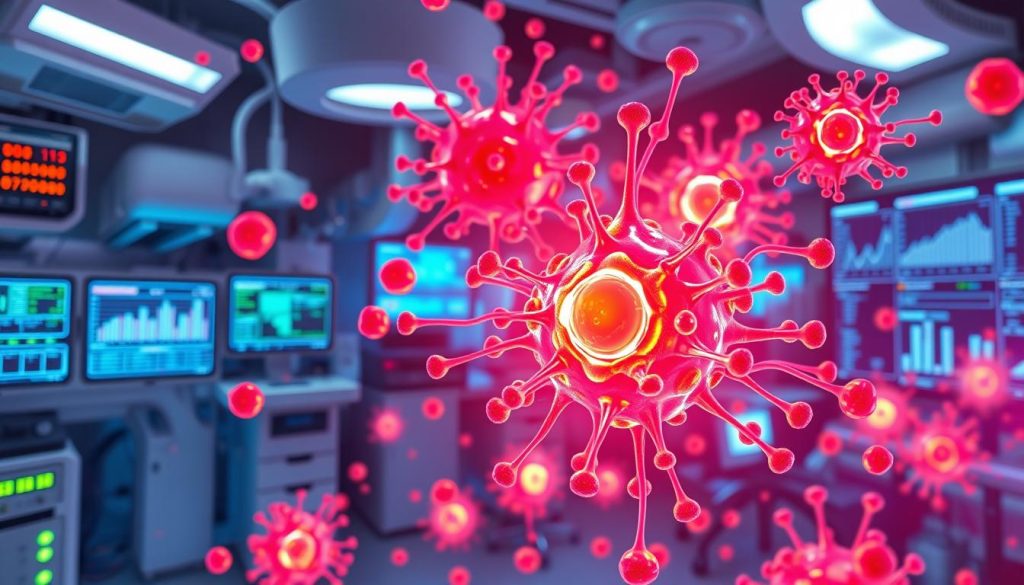
Another area of research is using CAR T cell therapy on solid tumors. This treatment has worked well for blood cancers but not as much for solid tumors. But, researchers are finding new targets and ways to make CAR T cells work better in solid tumors.
“The future of CAR T cell therapy is incredibly promising, with the potential to revolutionize cancer treatment and offer hope to patients who have exhausted other options.”
The table below shows some key research areas and their possible impact on CAR T cell therapy:
| Research Area | Potential Impact |
|---|---|
| CAR T cell optimization | Improved efficacy and reduced side effects |
| Solid tumor applications | Expanded treatment options for various cancer types |
| Combination therapies | Enhanced anti-tumor responses and improved outcomes |
| Off-the-shelf CAR T cells | Increased accessibility and reduced manufacturing time |
As research advances, we can look forward to more cellular therapy breakthroughs. The work of universities, drug companies, and health agencies is key. Their collaboration will help bring these new treatments to patients, helping them all over the world.
Cost and Accessibility of CAR T Cell Therapy
CAR T cell therapy has shown great success in fighting some cancers. But, the cost and how easy it is to get this personalized cancer treatment are big problems. The price can go up to hundreds of thousands of dollars, making it very expensive.
Insurance coverage for CAR T cell therapy varies. Some plans cover part of the cost, while others don’t cover it at all. Patients also have to pay for travel and lodging because the treatment is only available at a few places in the country.
To solve these problems, many groups and efforts are working to make CAR T cell therapy more accessible. Some cancer centers have financial help programs and grants to help with treatment costs. Researchers are also trying to make the process cheaper and faster.
“We must find ways to make this life-saving treatment more accessible and affordable for patients who desperately need it.” – Dr. Sarah Thompson, oncologist
As more trials show CAR T cell therapy works for more cancers, making it more accessible and affordable will be key. Working together, healthcare providers, insurance companies, and government agencies can help make sure this treatment is available to everyone who needs it.
Real-World Patient Experiences and Testimonials
Sarah, a 45-year-old mother of two, was diagnosed with advanced lymphoma. After trying all conventional treatments, her doctor suggested CAR T cell therapy. “I was hesitant at first, but I knew I had to try,” Sarah shares. “The treatment was intense, but the results were incredible. My cancer went into remission, and I’ve been cancer-free for two years now. CAR T cell therapy gave me a second chance at life.”
Michael, a 62-year-old retired teacher, also faced a tough battle with chronic lymphocytic leukemia. “I had been through rounds of chemotherapy and radiation, but my cancer kept coming back,” he explains. “When I learned about the high cancer remission rates associated with CAR T cell therapy, I knew it was my best hope. The treatment process was challenging, but the effectiveness of this immunotherapy was remarkable. I’ve been in remission for 18 months, and I’m grateful every day for this innovative treatment.”
These stories show the real-world impact of CAR T cell therapy. More patients are sharing their experiences, showing that this treatment offers hope and improved outcomes for those with advanced blood cancers. While CAR T cell therapy may not be right for everyone, its success in achieving long-term remission is a testament to the power of harnessing the immune system to fight cancer.
FAQ
Q: What is CAR T cell therapy, and how does it differ from traditional cancer treatments?
A: CAR T cell therapy is a new way to fight cancer. It uses the body’s immune cells to target cancer cells. This method is different from chemotherapy and radiation, which affect all fast-growing cells.
Q: What types of cancer can be treated with CAR T cell therapy?
A: CAR T cell therapy is approved for some blood cancers. These include B-cell lymphoma, chronic lymphocytic leukemia (CLL), and multiple myeloma. Researchers are also looking into using it for other cancers.
Q: How successful is CAR T cell therapy in achieving remission?
A: CAR T cell therapy has shown great success in treating certain cancers. In trials, up to 90% of patients with B-cell lymphoma saw their cancer go away. Similar results have been seen in CLL and multiple myeloma.
Q: What factors can influence the success of CAR T cell therapy?
A: Several things can affect how well CAR T cell therapy works. These include the patient’s age, health, and type of cancer. The success also depends on the T cells’ genetic changes and how well the patient’s immune system responds.
Q: How does CAR T cell therapy compare to other cancer treatments in terms of success rates?
A: CAR T cell therapy often works better than traditional treatments for some blood cancers. It can even help cancers that other treatments can’t. This makes it a promising option for patients with hard-to-treat cancers.
Q: Can CAR T cell therapy provide long-term remission?
A: Early signs suggest CAR T cell therapy can lead to long-lasting remissions. Some patients have stayed cancer-free for years after treatment. This shows CAR T cell therapy’s promise for lasting cancer control.
Q: What are the possible side effects of CAR T cell therapy?
A: CAR T cell therapy can cause side effects like cytokine release syndrome (CRS) and neurotoxicity. CRS makes the immune system overactive, causing fever and breathing problems. Neurotoxicity can lead to confusion and seizures. These effects are closely watched and managed by doctors.
Q: How accessible is CAR T cell therapy, and what is the cost?
A: CAR T cell therapy is available at specialized centers and covered by some insurance. But, it’s very expensive, often over 0,000. Efforts are being made to make it more affordable and accessible, like developing off-the-shelf products.













